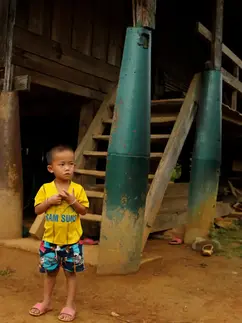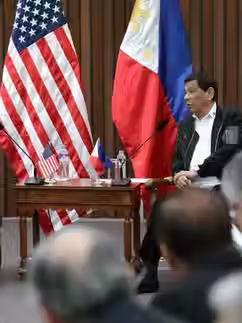Sino-Indian Border Dispute: The history and 2020 updates
- Isha Desai
- Nov 14, 2020
- 4 min read
Updated: Jan 27, 2022

Isha Desai
Among the political and economic turmoil of 2020, both the Indian military and People’s Liberation Army (PLA) have been making headlines for their actions at the Karakoram range bordering China, India and Pakistan. Their conflict in this area spans decades but has abruptly turned violent once again, further complicating bilateral relations.
Short History
Violent conflict between India and China over the border began on October 20, 1962 during the Sino-Indian War, when the PLA attacked an unprepared and shocked Indian army at the Ladakh border. This resulted in approximately 10 000-20 000 Indian soldiers facing off against an 80 000 strong Chinese army. After initially advancing toward the Line of Actual Control (LAC), China declared a ceasefire on November 21 and stated that from December 1, they would retreat 20km from the LAC that existed before the war began.
Since 1962, the nature of war and China and India’s military capabilities have changed dramatically. While both India and China’s GDP totalled around US$40 billion in 1962, China’s current GDP (US$13.6 trillion) is five times greater than India’s (US$2.7 trillion). Accordingly, China’s defence budget of US$261.1 billion is also four times larger than India’s US$71.1 billion. Therefore, their status as simultaneous but asymmetric rising powers disincentives a large hot border war between the nations as comparative resources leave India at a pre-emptive loss.
Furthermore, since 1962, conflict between the nations has expanded to include proxy wars, widening spheres of political influence and economic sanctions. These all point to an ongoing rivalry that seeks to avoid a traditional ‘hot war’ between China and India. This can be observed by India’s growing partnership with China’s rivals, the United States and Japan, and China’s deepening ties with Russia to undermine the United States. Additionally, following the death of 20 soldiers at the Himalayan border, India attempted to boycott Chinese products, with Prime Minister Narendra Modi stating that a self-sufficient India would be “a tribute to our martyrs.” Therefore, while the 2020 skirmishes were not as prolonged or fatal as the 1962 Sino-Indian War, the political rivalry between India and China continues to provoke strong reactions.
2020 Updates
The 3440km Himalayan border that spans the Karakoram range is framed by bodies of water and snowcaps, resulting in vague national boundaries that fuelled the confrontation and stand-off between the Indian and Chinese militaries earlier this year.
Amid the COVID-19 pandemic, India and China’s conflict over this region resurfaced on June 15, when 20 Indian soldiers were killed in the Galwan Valley in an animalistic confrontation with sticks and clubs. Not only was this a devastating episode for both parties involved, but it was their first fatal border dispute since 1975. Accordingly, it reignited long-standing political tensions between the two industrialising nations.
India and China both intend to build infrastructure along the contested border (LAC) and India’s new road leading to a military air base has been identified as a possible trigger for the initial conflict in June this year that killed 20 Indian soldiers.
The following months saw both countries allege that the other had provoked tensions at the border. In August, India claimed that China’s PLA had carried out ‘provocative military movements’ in Ladakh, creating a perceived need to strengthen their own military position to protect territorial integrity. These accusations were denied by China, who asserted that India were the initial aggressors at the border escalating tensions.
Shortly after, on September 7, China accused India of firing shots at Chinese troops while India claimed that it was the Chinese military that fired intimidation shots into the air. While no fatalities occurred, it violated a 1996 agreement which banned the use of guns and explosives at the border.
Most recently, on October 21, it was revealed that a Chinese soldier, who had crossed the disputed border at Demchok in Ladakh, had been returned by the Indian military. Indian authorities provided the PLA soldier medical assistance and oxygen before ensuring he returned to his home country’s base. Protocols that govern the accidental wandering of soldiers along the border mandated that India return the lost soldier.
Since June, politicians and the military commanders from India and China have been through eight rounds of negotiations to determine clearer national zones and negotiate conflict de-escalation. Patrolling limits, buffer zones and early disengagement to protect soldiers during winter have been the main topics of discussion; however, these agreements merely aim to facilitate a fairer playing field between the parties as opposed to achieving long-term solutions to their decades-long dispute.
Conclusion
The 1962 Sino-Indian War had been the last significant conflict between China and India on the border until earlier this year. While Sino-Indian relations have always been strained, their relationship was seemingly heading towards mutual co-existence in the Himalayas. However, the recent turn of events has repositioned the border dispute as one of the main controversies between the two nations. Currently, it cannot be said whether these skirmishes will be followed by decades of non-violent tensions, repeating China and India’s previous patterns, or whether these new events will accelerate the conflict, culminating in an aggressive battle for territory. Either way, we must look out and monitor the situation at the border, for it could be indicative of Sino-Indian political relations in the years to come.
Isha Desai is a first-year student studying Politics & International Relations/Economics at the University of Sydney. She is particularly interested in the analysis and implementation of public policy and foreign policy.

















Comments